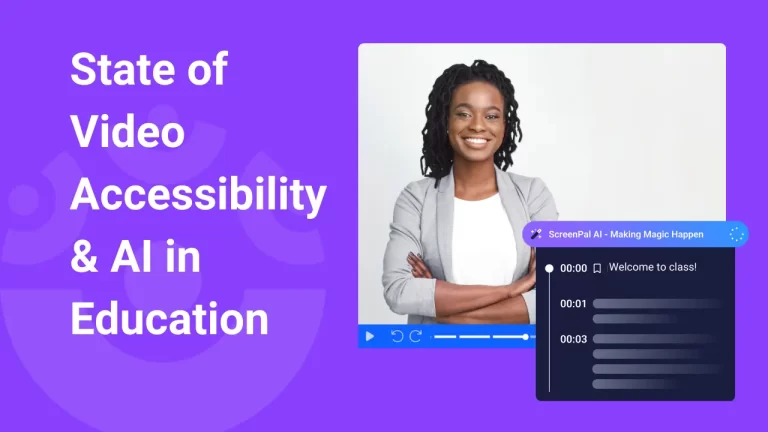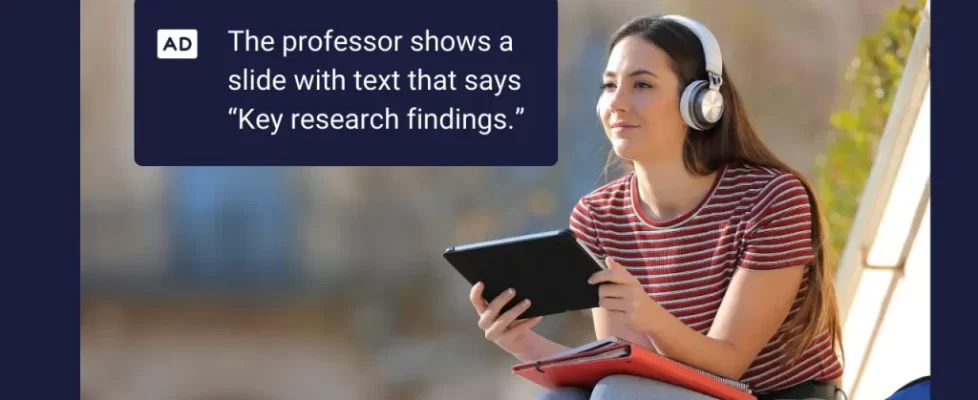Video use is growing—but accessibility isn’t
What educators told us about accessibility, AI, and the future of inclusive video
Overview
Educators are creating more video than ever—but are they leaving students behind?
We surveyed over 600 educators across K–12 and higher education to understand how they’re approaching video accessibility, how aware they are of new requirements that may affect their institutions, and what role AI might play in solving the challenges ahead.
The findings are clear: Video is central to teaching and learning, but much of it still isn’t accessible. And while there’s growing urgency to close that gap, institutions still aren’t prepared to meet current and upcoming accessibility requirements.
With new US federal rules mandating digital accessibility (including audio descriptions) for many institutions by April 2026, the time to act is now.
Why video accessibility matters now more than ever
Accessibility isn’t just a best practice for inclusive video teaching and learning. It’s becoming a requirement in more and more countries and industries. Just this past June, the European Accessibility Act of 2025 took effect. And starting in April, 2026, larger public institutions in the U.S. will need to comply with new digital accessibility regulations under Title II of the Americans with Disabilities Act (ADA).
In 2024, the U.S. Department of Justice (DOJ) issued a new rule which will require state and local governments—including public colleges, universities, and school districts—to make their web content and videos accessible by following the Web Content Accessibility Guidelines (WCAG) 2.1, Level AA. Smaller organizations have until April, 2027, to prepare. But for public institutions serving 50,000+ people (e.g., state colleges and universities, large K-12 school districts), these new regulations go into effect in April, 2026, during this current academic school year.
Given how quickly this compliance deadline is coming up and how essential video has become at every grade level, we set out to understand the state of video accessibility in education, and what role AI could play in increasing accessible access to video learning.
🔑 Key learnings
- 45% of educators are unaware of these new digital accessibility rules.
- 57% report increased video use—but most aren’t making it fully accessible.
- Time, training, and uncertainty, not budget, are the most significant barriers to accessibility.
- Educators are cautiously optimistic about AI, but they need training and trust.
- Audio descriptions are large compliance gap: 47% of educators haven’t added any.
The compliance gap: Most educators don’t know what’s coming
This new ADA Title II digital accessibility rule will require captions and audio descriptions on all public-facing video content. But many educators—especially classroom teachers and faculty—still haven’t heard about it.
- 45% of higher ed faculty and 58% of K–12 teachers said they were not at all familiar with the rule.
- Administrative and tech staff are more aware, but awareness is still uneven. Only 15% report being “very familiar.”
One respondent shared: “I didn’t know about the new ADA rules until this survey.”
Many educators are also unsure if their institutions are preparing. Educators in higher education report greater awareness of institutional preparedness. Among administrators and staff who are aware of their institution’s status, 68% in higher education report their university is preparing vs 47% in K-12 schools & districts.
For more insights into educator and institutional awareness, preparedness, and policies, download the full report for free.
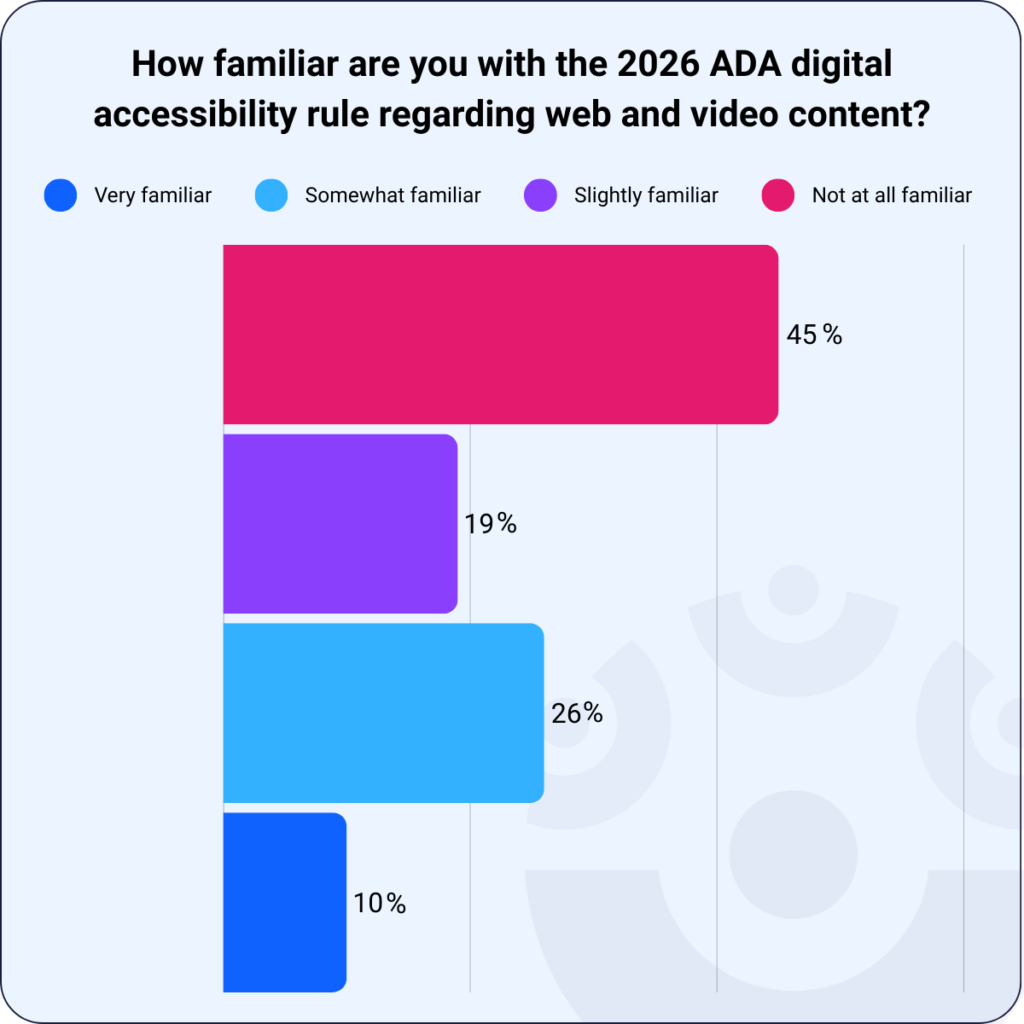
More video. Less access.
Educators are using video more than ever—81% of K–12 teachers and 72% of faculty report creating lecture or instructional videos. But accessibility practices haven’t kept pace.
Accessibility Gaps:
- Only 16% of K–12 teachers caption 76–100% of their videos (compared to 37% of higher ed faculty).
- Just 14% of K–12 and 24% of higher ed faculty say most of their videos include audio descriptions.
- Multilingual availability is even rarer—only 4% of educators make most content available in multiple languages.
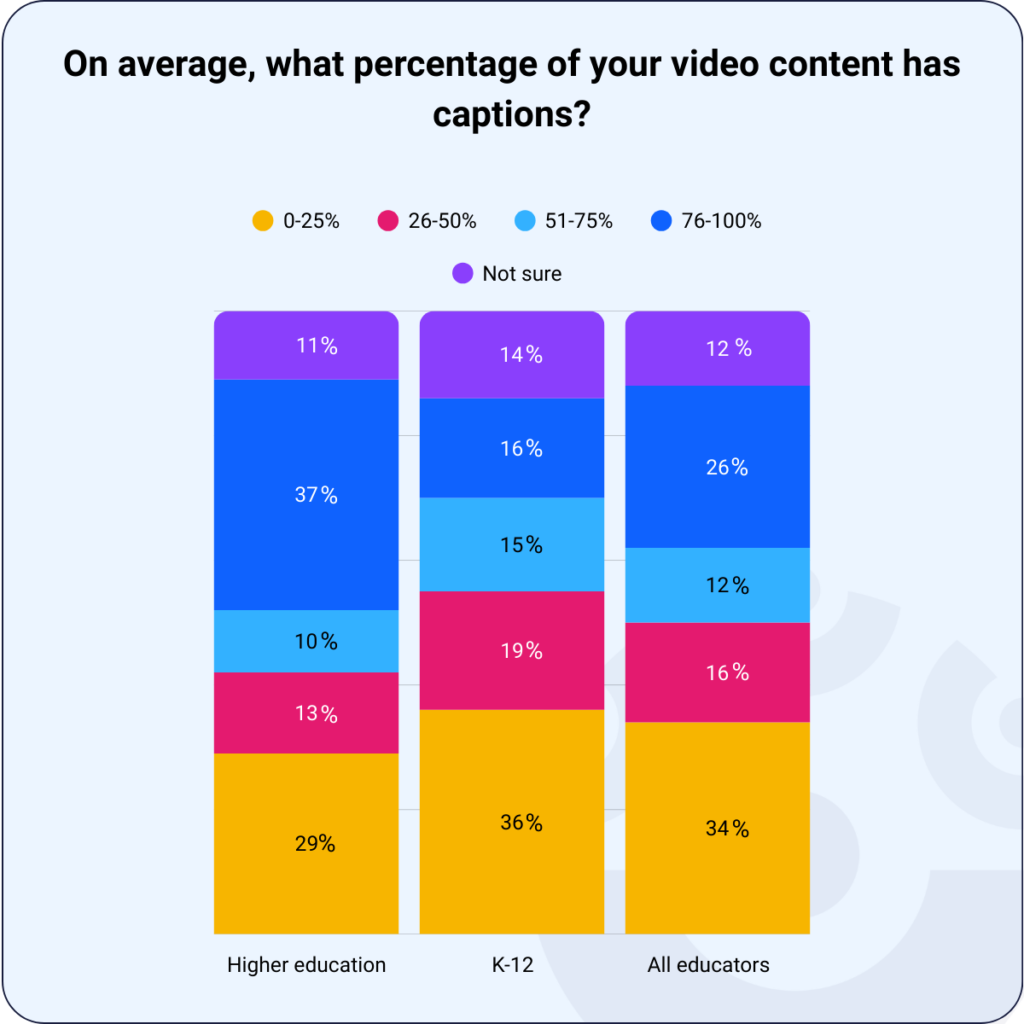
Download the full report for free to see all of the charts and details on current video accessibility practices in K-12 and higher education.
It’s not the tech—it’s the time
When we asked educators what’s getting in the way, their answers were clear:
⏱️ “Time to add captions and audio descriptions”
🧩 “Not sure what qualifies as compliant”
🧑🏫 “Lack of training or staff support”
Only 11% of respondents said they receive full institutional support for making video content accessible. And while budgets do matter, cost was far less frequently cited than training, clarity, and available time.
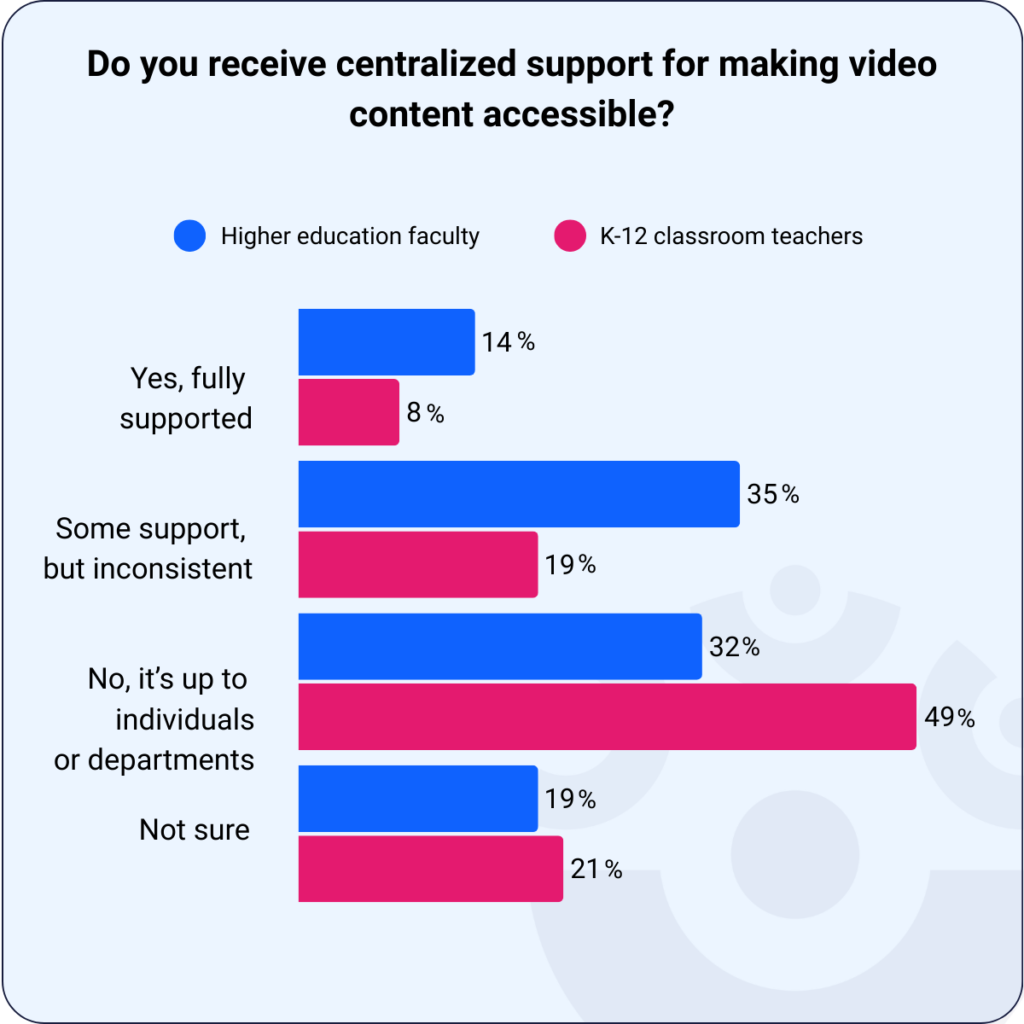
Making AI work for educators means getting the details right
Most educators are open to using AI for video accessibility—if they can trust it.
- 56% are somewhat or very comfortable using AI tools like auto-captioning and voiceovers.
- Top concerns: accuracy, training, and privacy.
- 74% said they’d feel more confident with training, and 71% want better accuracy.
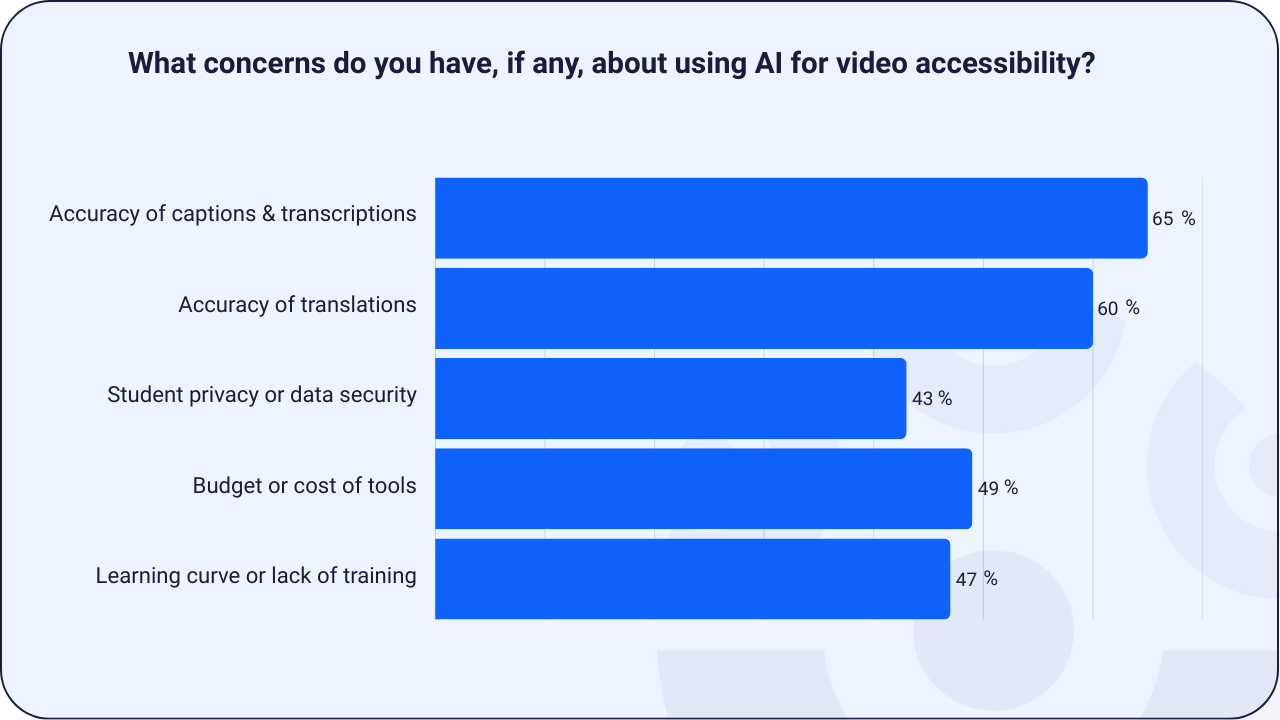
Wondering what would make educators more comfortable using AI tools for video accessibility? Download the full report for free to get the details.
From confusion to confidence: Making sense of audio descriptions
Audio descriptions (ADs)—narrated descriptions of visual content for learners with low vision—are a new legal requirement. But they remain a mystery to many educators.
- 46% haven’t added any ADs to their videos.
- 41% say lack of time or staff support to create ADs is their biggest challenge.
- 32% say they don’t know what qualifies as a compliant audio description.
What educators want:
- AI-generated audio descriptions with manual editing options
- The ability to add audio descriptions without having to re-edit videos
What educators want from their tools
The survey also revealed what matters most in accessibility and AI video tools:
- Ease of use (especially for non-technical users)
- Affordability
- AI features that truly save time
- LMS integrations
- Accessible to use
“Can’t say this enough: Help with audio descriptions. If that means an AI tool, I’m in.”
Ready to start closing the accessibility gap?
Video accessibility is no longer optional. Institutions that prepare now will save time, avoid compliance risk, and build a more inclusive learning environment.
The good news? Educators are ready for solutions that are easy, innovative, and supportive—and that’s precisely why we developed our new AI audio description tool as part of our full accessible video learning solution.
Whether you’re supporting a single department or planning a district or campus-wide adoption, we’re here to help.
Together, we can make accessible video the standard—not the exception.
Book a personalized demo or explore education pricing.
